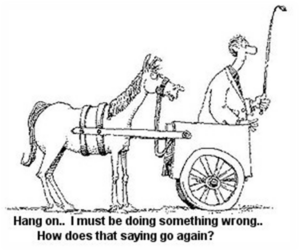Why Lean Manufacturing Doesn’t Work Today
Why “Lean Manufacturing Doesn’t Work Today”
Guest writer Bruce Baker shares with us the reasons why lean manufacturing doesn’t work today: the reasons are not exactly what you might think…
Whether you own a bookkeeping business, cabinet-making business or legal practice, all businesses are made up of routines, which rely on consistent, one-at-a-time processes. Everything we do that keeps society “together” relies on repeatable activities. Whether it’s brushing our teeth, getting dressed or eating breakfast, all rely on repeatable processes.
For those who are not aware of the practice of Lean, allow me to provide you with a brief history and definition. Lean is the concept of efficient manufacturing/operations that grew out of the Toyota Production System in the middle of the 20th century. It is based on the philosophy of defining value from the customer’s viewpoint and continually improving how value is delivered by eliminating every use of wasteful resources, or that does not contribute to the value goal. In short, taking things one step at a time is the make or break of business and general success in life.
Many have heard before… “take it down a notch…one thing at a time”. Several months ago, I wrote a short article called “Your Interpretation of Time,” where I stressed the importance of how reactive we have become as a society, including business. Our interpretation of time today is drastically shorter, and the general consequences of failure, impressively higher and more extreme than before. This inevitably leads to reactive, narrow, and short-term decision-making. Albert Einstein once said, “When you are courting a nice girl, an hour seems like a second. When you sit on a red-hot cinder, a second seems like an hour. That’s relativity.”
My bold statement of “…Lean doesn’t work today” is not that the practice and methodology are ineffective; on the contrary. Lean is applicable in every industry and every business and mentioned in the beginning of this article, in your personal life. The practice and adoption of Lean are fantastic when a business and its people adopt this “way of business life.”
A challenge we are all presented with is that if we adopt Lean as a practice, we need to accept that our reactional, short-term, and high-crisis manner of thinking will always stop us from adopting practices like Lean.
Building and growing a business is never easy emotionally, but requires a strict set of routines and processes, and each process must be executed effectively. This can only happen if each process performs effectively in an individual manner parallel to its fellow processes. This requirement is not limited to the business world but the very nature of our world, yet we insist on a short-term, high-crisis manner of thinking.
As I write this article, I sit in a Lean manufacturing training session with Quantum Lean. Lynn (the Lean instructor) mentioned that adopting Lean “takes time” and that “people do not like to change”. Although I completely agree with Lynn, people resist change primarily because they fear the unknown. Statements like “I don’t see the reason to change,” “I don’t have time to wait for them”, “I have so many problems to deal with, I don’t know where to start” or finally, “Oh, I’ll add this to my list of problems I have to solve…I don’t have time to deal with little issues like this now!”
In conclusion, if you have or are anticipating implementing Lean in your business, remember this. It all starts with the leader of the business. If the leader does not make this mind shift, the rest of the team will not make the shift either. Lean is not another tool or method. It is a change in the state of mind and subsequently changing the business’s culture from fighting fires to experiencing the inherent joy of work and life in general.
As a wise mentor of mine once said, “one step at a time, grasshopper….”
Did you enjoy this blog? Read more great blog posts here.
For our course lists, please click here.





